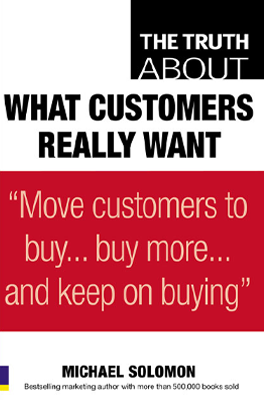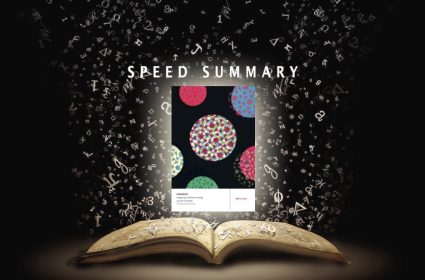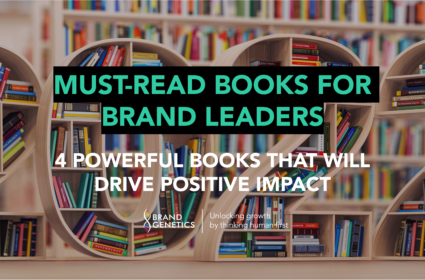The Truth About What Consumers Want (Part 2)

 The Truth About What Customers Want
The Truth About What Customers Want- Author: Michael Solomon
- Publisher: FT Press
- Publication: 2009
Marketing is about satisfying needs, but in order to do that you need to understand needs. To help busy marketers, Dr Michael Solomon, consumer psychologist and author of the leading textbook on consumer psychology; Consumer Behaviour: Buying, Having and Being, has distilled down the discipline into 50 short chapters covering 50 basic truths about what customers want.
So here’s the second part of the distillation of the distillation – 50 bite-sized truths about what customers want: 26-50 (see here for first 25)
26. Your customers have your brand on the brain – The next frontier of marketing research is not mind reading, but brain reading – moving beyond filtered and self-censored verbal or behavioural responses and looking directly how the brand responds to brand stimulus using tools such as FMRI (functional magnetic resonance imaging). Neuromarketing is unlikely to uncover a “buy button” in the brain, but will be able to identify emotional responses.
27. Let their mouseclicks do the walking – The Web is great, giving consumers more information than ever before to inform decisions – but the flip-side is information overload. The future of digital marketing is not about product discovery – opening up options, but product selection – narrowing down options, and simplifying choice. Online reviews, particularly those from other customers are the most powerful tool in this new recommendation economy.
28. Nothing shouts quality like leather from Poland – Provenance matters, we associate places with quality – provenance is an associative heuristic (mental shortcut) that we use to inform decisions. In addition to place of origin, price and age are also associated with quality. Associations can be as influential – sometimes more influential than benefits, features or attributes on choice. One reason for this is that when using associative heuristics we tend to look for evidence that confirms desirable associations (confirmation-bias).
29. Consider investing in a drive-thru mortuary – A critical dimension of experience often overlooked by marketers is time, and selling to time-poor is a significant opportunity. Helping people save time, optimise time, and reduce dead time are key opportunities. And whilst making customers wait can build anticipation, it is more likely to negatively impact on the final experience. By understanding how time is experienced, marketers can tailor messages that resonate – when we are experiencing time cyclicly (as in re-occuring seasons – as opposed to linearly (past, present, future), procedurally (one thing after another)), appeals to future benefits may fall on deaf ears.
30. Go to the Gemba – The best way to generate valid customer insight, identify opportunities and formulate solution is to observe consumers in the context of consumption – where they are actually using products and services. This is the “Gemba” Japanese for the one true source of information. The future of marketing is all about context and closeness. Being close to customers – particularly being attentive and responsive to problems they experience is key to success. A customer who complains and gets their problem resolved is more loyal than a customer who never had a problem; actions, not words, is the future of marketing.
31. Your customers want to be like Mike – Product choices are strongly influenced by what others do – particularly those in our “reference group” – people we associate ourselves with and compare ourselves to. Reference groups have “social power” over us and there are 6 types of social power; “referent power” (influence by reputation), information power (influence by access to information), legitimate power (influence by profession/position e.g. a doctor), expert power (influence by competence and knowledge) and reward power (influence by rewards/incentives), and “coercive power” (influence by force)
32. Go tribal – People are tribal insofar as they form bonds with others who share interests and lifestyles. Targeting tribes rather than building brand communities carves the consumer world up at its natural joints. The goal should be to get an existing tribe to adopt and “own” your brand, rather than seek to bind a random population of consumers around a shared interest in a brand.
33. People like to do their own thing, so long as it’s everyone else’s too – Conformity – our tendency to follow group-based rules and norms – is a powerful influence. Cultural pressures, fear of ostracism and desire for inclusion drive group-behaviour particularly for those susceptible to interpersonal influence, and when the group is unanimous, large and led by experts. An opportunity for marketers is to create products and advertising that work with group rules and norms, rather than break them.
34. Catch a buzz – Word of mouth influences two-thirds of all consumer goods sales, personal recommendations are seen as trustworthy, and add credibility to advertising. You can’t manufacture word of mouth but you can stimulate it – get your product into the hands of brand fans first – and give them samples and remarkable content to share. Recruit fans as brand ambassadors, pay them in kind with exclusive brand experiences in return for spreading the word.
35. Go with the flow; get ‘shopmobbed’ today – The Web has increased consumer clout, and by helping consumers organise into groups to benefit from group-discounts brands can win advocates. Long popular in China, group-buy services (tuangou) have been copied and put online in the West (Groupon, LivingSocial). In China, online services exist to promote “shopmobbing” groups of consumers organising online to meet in a traditional store and ask for a group-buy discount (e.g. liba.com). Is there an opportunity in the West for such a service?
36. Find the market maven, and the rest is gravy – Some personal recommendations carry more weight than others – from people in the know, or “market mavens” as they have come to be known. Market mavens are gate-keepers to mass adoption of new products, not necessarily experts themselves but category enthusiasts plugged into expert sources. A category of market mavens, often overlooked by marketers, are professional advisors (interior decorators, lifestyle consultants, personal trainers and shoppers). Win the hearts of category enthusiasts and you win the market.
37. Hundreds of housewives can predict your company’s future – Prediction markets are one of the hottest trends in forecasting the future. Companies increasingly run internal trading games, allowing employees to buy and sell “futures” – possible outcomes for new products and trends; prediction markets have been highly successful in predicting outcomes. Is there an opportunity to run a trading game of your category or competitors – with employees, or perhaps even consumers?
38. Know who wears the pants in the family – People who use brands may not be those who choose them. Understanding who makes buying decisions in a family is a key issue for marketers, as is understanding the dynamics of how joint family decisions are made. Women, for example, tend to have a power of veto over car purchases. Most large purchase decisions are now joint purchase decisions.
39. Youth is wasted on the young – Pester-power (or “parental yielding” as it is technically known) is the influence of children on adult purchases and it is significant – $453bn of purchases are influenced by children every year. One third of parents say their children actively participate in car-buying decisions. Children influence purchases in three markets – primary market (products for children), influence market (parent purchases) and future markets (products they’ll buy when older). Just because your product is not for children, could you harness kid-influence?
40. Make millions of Millenials – Marketing to age cohorts works because culture is shared and changes over time, and people’s tastes change with life-stage. The Millennials are an age cohort – a generation also known as Gen Y or echo-Boomers and were born in the early 80s. Unlike their predecessors Gen X, Millennials tend to hold relatively traditional values, are optimistic about the future, happy with technology, value authenticity, and tend to work the system rather than rebel against it; in many ways they are more reminiscent of the Boomer generation (hence the term echo-Boomer). As an alternative to thinking in terms of target population, think in terms of target generations.
41. Grownups don’t grow up anymore – Whilst the youth market is always attractive to marketers, it’s more profitable to target people at the peak of their earning power – that means Boomers and Generation X. Valuing youth more than youth, these older consumers are open to marketing and products that appear youthful. Levi’s markets its jeans as if they were for teens and young adults, but sells (and designs) jeans for the middle aged
42. Dollar stores make good cents – The key to selling to low-income consumers in developed countries is to sell staples not luxuries – they consume staples – such as milk juice and tea – at the same rate as average income families. The key to selling to low-income consumers in emerging economies is to sell in smaller quantities; when Nestlé halved the size of coffee packs in Brazil, sales jumped 40%.
43. The rich are different – The affluent are not a homogenous group; similar bank balances are not a good predictor of similar tastes or propensities. So don’t segment on income or wealth. “New Money” consumers still behave very differently to “Old Money” consumers, and the wealthy behave very differently to high-earners. Marketing to newly affluent consumers – the nouveau-riche – can be easier because they tend to suffer from “status anxiety” and have a need to show off their money with status brands and conspicuous consumption.
44. Out with the ketchup, in with the salsa – In a globalised consumer society, ethnic or “world” products have an increasing appeal. Ethnic marketing is the new niche marketing, marketing to specific ethnic groups that share similar subcultures, tastes and desires. Ethnic products appeal not only to ethnic groups, but also the new “world” consumer looking to experience new cultures through consumption.
45. Look for fly-fishing born-again environmentalist jazz-loving Harry Potter freaks – We are witnessing a continuing spiral of market fragmentation that requires us to speak with increasingly greater precision to smaller groups of consumers. Forget sub-culture, we’re talking ‘microcultures’ with their own identities, symbols and values – and you need precision marketing to reach them. As McDonald’s former CMO, Larry Light concluded “Mass-marketing mass messages to masses of people via mass media is a mass mistake.”
46. Ronald McDonald is related to Luke Skywalker – Cultural myths – stories with symbolic elements that represent a culture’s ideals – are pervasive and persuasive. Build on cultural myths with campaigns based on comics, movies, holidays and even old commercials.
47. Sign a caveman to endorse your product – By appropriating elements of popular culture and using them as promotional vehicles, brands can resonate strongly with consumers. Product placement and event sponsorships are two powerful tools for this kind of “reality engineering” Research shows that they work best when the placement or event clearly communicates a key brand benefit
48. Make your brand a ‘fortress brand’; and make mine a Guinness – A fortress brand is a brand embedded in cultural rituals, routinised behaviour with symbolic meaning. Like the two-minute wait for a perfect pint of Guinness. Smart branding involves identifying consumer rituals and making your brand part of them, and smart innovation involves creating ‘ritual artefacts’ – products and services that help consumers perform their rituals.
49. Turn a (pet) rock into gold – Consumers are influenced by fashions – whether long-term trends or short-term fads, and smart marketers will seek to build on trends. Trends, unlike fads, offer real benefits, can be personalised, and fit with long-term lifestyle changes. Starbucks for example, built on the trend of gourmet coffee, Chrysler on the trend for retro cars and Taco Bell on value pricing.
50. Think globally, act locally – When Walmart opened in Germany, it taught checkout clerks to smile at customers – but customers thought they were flirting with them. Although the argument for a homogenous world culture is appealing in principle, in practice is hasn’t worked out too well. Look for global benefits, but offer localised features and communications.




